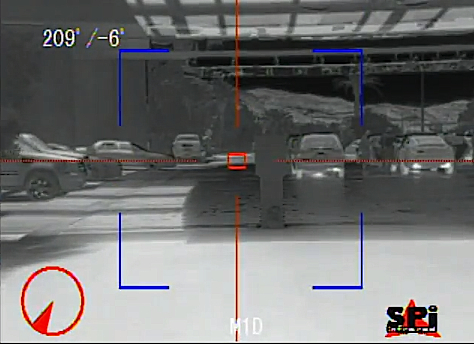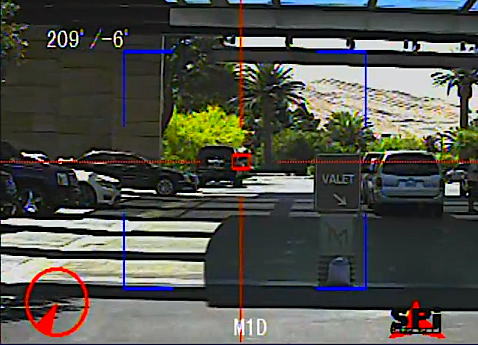Hey Guys!
I am working on a project to allow us to implement GPS coordinates for the location of the crosshairs of a PTZ camera, other wise known as Geo-pointing. This will essentially give us the LAT/LONG of what we are looking at.
I have found several methods to do this, but I'm looking for the simplest way but accurate as possible. I am fairly new to modifying APM and to MAVLink so instruction and suggestions are very welcome! Here is what I have in mind:
In order to get this:
LAT/LON: Self explanatory
BRG: Bearing
SRG: Slant Range (Range from Aircraft to location)
GRG: Ground Range (Range from coordinate to coordinate)
I have a formula to triangulate the position of where the crosshairs are pointing relative to the aircraft by using trigonometry. Here is the example:
The system will incorporate 1x APM 2.5 w/ GPS, 3DR Telemetry radios, 1x IMU w/ compass for camera gimbal, 2x MinimOSD boards, 2 cameras, 1x video TX with two-way camera switcher.
Method:
Application extracts altitude from APM and camera angle from Camera IMU and finds the tangent and cosine of the angle and finds the missing sides. This will give us the ground distance and slant range respectively.
TAN(CAng)*Alt = GndDist COS(CAng)*Alt = Slant
At this point the slant and ground range can be transmitted to the video feed.
Next, we use the aircraft's GPS coordinates from the APM and the ground distance to find what coordinate we are looking at on the ground:
aL-aircraft Latitude
aO-aircraft Longitude
cL-crosshair Latitude
cO-crosshair Longitude
A-aircraft Altitude
D-ground Distance
B-Bearing from Gimbal Compass
cL =ASIN(SIN(aL*PI()/180)*COS((D=TAN(A*PI()/180)/6378.137) + COS(aL*PI()/180)*SIN((D=TAN(A*PI()/180)/6378.137)*COS(B*PI()/180))*180/PI()
cO =((aO*PI()/180) + ATAN2(COS((D=TAN(A*PI()/180)/6378.137)-SIN(aL*PI()/180)*SIN(cL*PI()/180), SIN(B*PI()/180)*SIN((D=TAN(A*PI()/180)/6378.137)*COS(aL*PI()/180)))*180/PI()
These formulas are in excel format since it is what I used to test these.
This should give us the coordinate under the crosshair.
Next, I would like for this information to be sent to the second OSD for the gimbal camera.
Now my question is, how do I implement this?
I would assume that I can attach the IMU and compass via analog sensor input, however, I have no idea how to write code for it.
I also do not know how to write the code for the calculations to the APM in order for the APM to do all the formulas. Can the APM handle it or do I need a separate processor?
How do I create a MAVLink message for the new coordinates and inject into the data stream?
How do I write the code to the MinimOSD to retrieve the new coordinates and display it?
These might sound like noob questions, but I come from a radio frequency engineer background and just now getting into programming. I would love to learn how to do this stuff but there is very little out there on what I'm wanting to do exactly. Sure, I can make an LED blink, and I know that's the basic skills, but I need to know how exactly to interface this with the APM and sensors.
Once again, all of your help is greatly appreciated and I very much welcome discussion and suggestions on a better way to do this!
-Hunter


